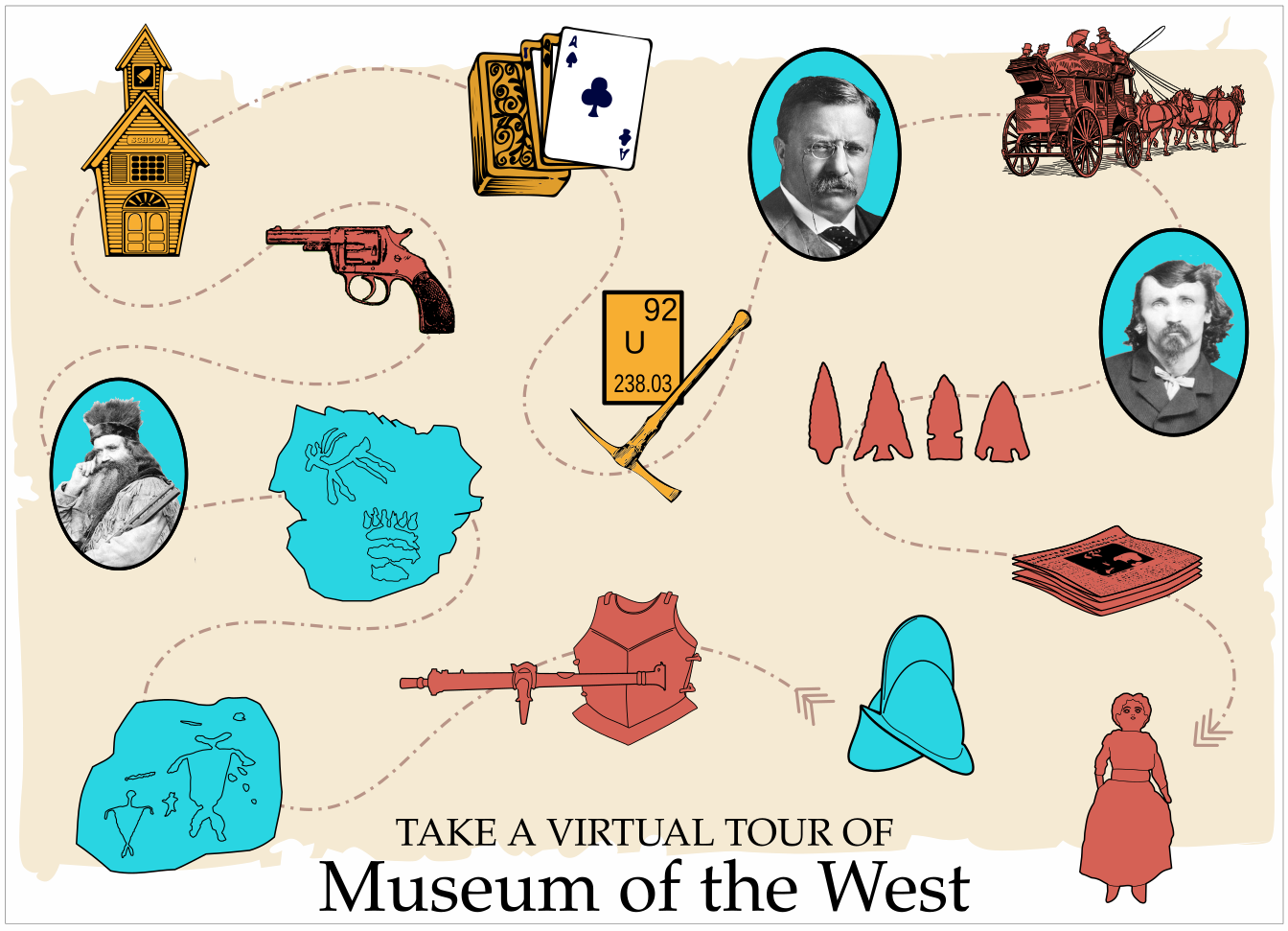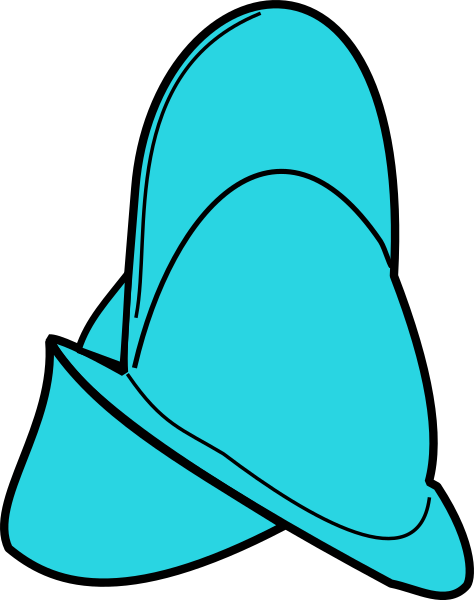Scroll over and click the icons to watch the videos associated with this tour. You can either start at the Spanish Explorers ![]() or watch the videos in any order you like!
or watch the videos in any order you like!

Topics Covered on Tour Stops:
 |
Stop 1: Spanish ExplorersDid you know that the Spanish once explored Western Colorado? Curator of History David Bailey describes the armor used by the early Spanish explorers and what life was like for them. |
 |
Stop 2: Spanish Explorers and the Mystery of the Redoubt SiteWhy did the Spanish come to Western Colorado and what happened at the Redoubt Site? Curator of History and Director of the Western Investigations Team, David Bailey tells us more about why the Spanish were here and the unsolved mystery of the Redoubt Site. |
 |
Stop 3: The Fremont CultureThe Fremont lived in Colorado Plateau from 500-1300 CE. They left behind artifacts and rock art, but not much is known about what happened to them. David Bailey explains what we do know about the Fremont culture. |
 |
Stop 4: The Ute PeopleThe Ute people once called all of Colorado their home. Shortly before Grand Junction was founded, the Utes were forcibly removed to Utah. David Bailey describes what life was like for the Utes prior to their expulsion from the area. |
 |
Stop 5: Mountain MenMountain Men not only worked in the fur trade, but they helped open the west to further expansion by the United States. David Bailey explains what life was like for mountain men and how territory in the west changed hands over time. |
 |
Stop 6: Thrailkill Firearms CollectionCurator of History, David Bailey, explains the history behind the rifles used by mountain men and the guns used by famous and infamous residents of the Wild West! |
 |
Stop 7: Colorado SchoolhouseWhat was school like in the early days of Grand Junction? David Bailey tells us what teachers and students did at school. |
 |
Stop 8: Pastime SaloonSaloons were gathering places during the early days of Grand Junction. Curator of History, David Bailey, describes what went on in these gathering places. |
 |
Stop 9: Uranium BoomThe Uranium boom made Grand Junction famous. Its nickname became “The City That Glows.” David Bailey explains the effect the Uranium boom had on Grand Junction. |
 |
Stop 10: Theodore RooseveltPresident Theodore Roosevelt was an avid hunter and conservationist. His travels even took him to Colorado! Join David Bailey as he tells us what Roosevelt’s visit was like and how he found his dog, Skip, here in Colorado. |
 |
Stop 11: Stagecoaches and Mud WagonsTransportation has changed a lot over time. David Bailey describes what travel by a stagecoach or mud wagon would have been like. |
 |
Stop 12: Alferd Packer and the Western Investigations TeamWas Alferd Packer a murderer? David Bailey describes how he and the Western Investigations Team solved this historic mystery. |
 |
Stop 13: ArchaeologyJoin archaeologist, Phil Born, as he explains what an archaeologist does and shows us the BLM archaeology collections at Museum of the West |
 |
Stop 14: Loyd Files Research LibraryCurator of History and Archaeology Vida Jaber describes what she does and how the Museum’s Library is different from other libraries. She also explains primary and secondary sources. |
 |
Stop 15: Small Artifact StorageMuseums of Western Colorado Collections Manager Matti Fisher takes us into small artifact storage and explains how the museum cares for historic artifacts. |
